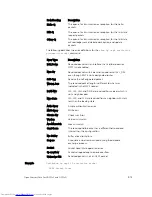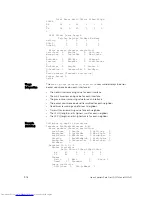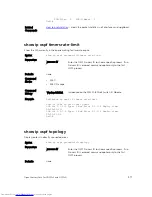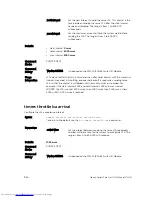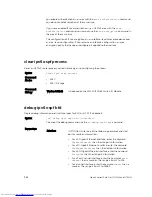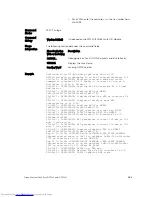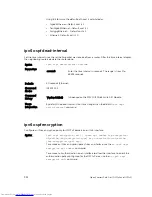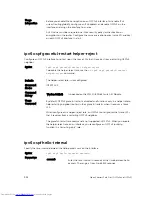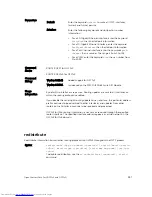
Command
History
Version 9.2(0.0)
Introduced on the MXL 10/40GbE Switch IO Module.
Usage
Information
Before you enable IPsec authentication on an OSPFv3 area, you must first enable
OSPFv3 globally on the router. Configure the same authentication policy (same SPI
and key) on each interface in an OSPFv3 link.
An SPI number must be unique to one IPsec security policy (authentication or
encryption) on the router.
If you have enabled IPsec encryption in an OSPFv3 area with the
area
encryption
command, you cannot use the
area authentication
command in
the area at the same time.
The configuration of IPsec authentication on an interface-level takes precedence
over an area-level configuration. If you remove an interface configuration, an area
authentication policy that has been configured is applied to the interface.
area encryption
Configure an IPsec encryption policy for OSPFv3 packets in an OSPFv3 area.
Syntax
area
area-id
encryption ipsec spi
number
esp
encryption-
algorithm
[key-encryption-type] key authentication-algorithm
[key-encryption-type] key | null
To remove an IPsec encryption policy from an interface, use the
no area
area-
id
encryption spi
number
command.
Parameters
area
area-id
Area for which OSPFv3 traffic is to be encrypted. For
area-id
,
enter a number.
The range is from 0 to 4294967295.
ipsec spi
number
Security Policy index (SPI) value that identifies an IPsec
security policy.
The range is from 256 to 4294967295.
esp
encryption-
algorithm
Encryption algorithm used with ESP.
Valid values are: 3DES, DES, AES-CBC, and NULL.
For AES-CBC, only the AES-128 and AES-192 ciphers are
supported.
982
Open Shortest Path First (OSPFv2 and OSPFv3)








